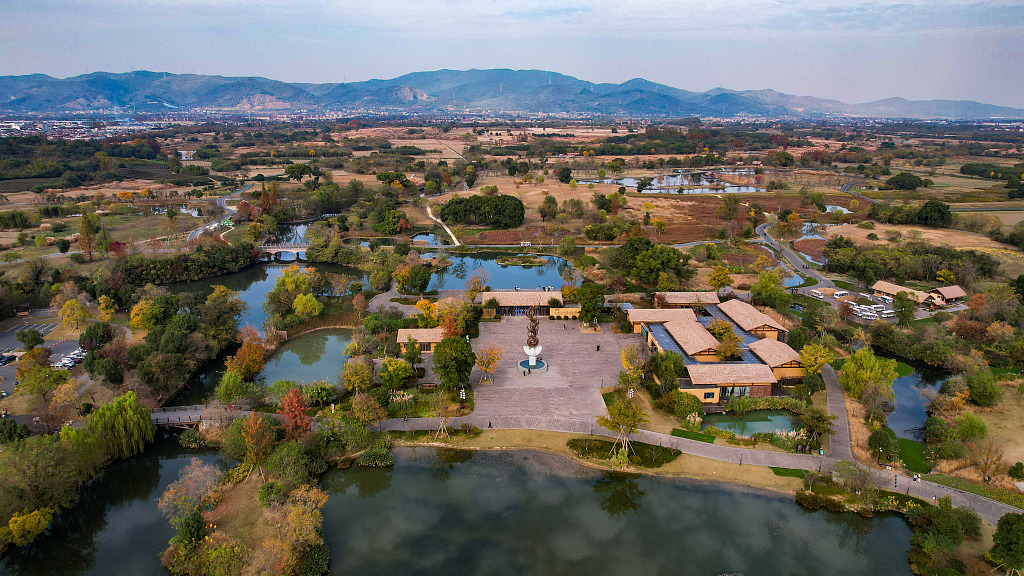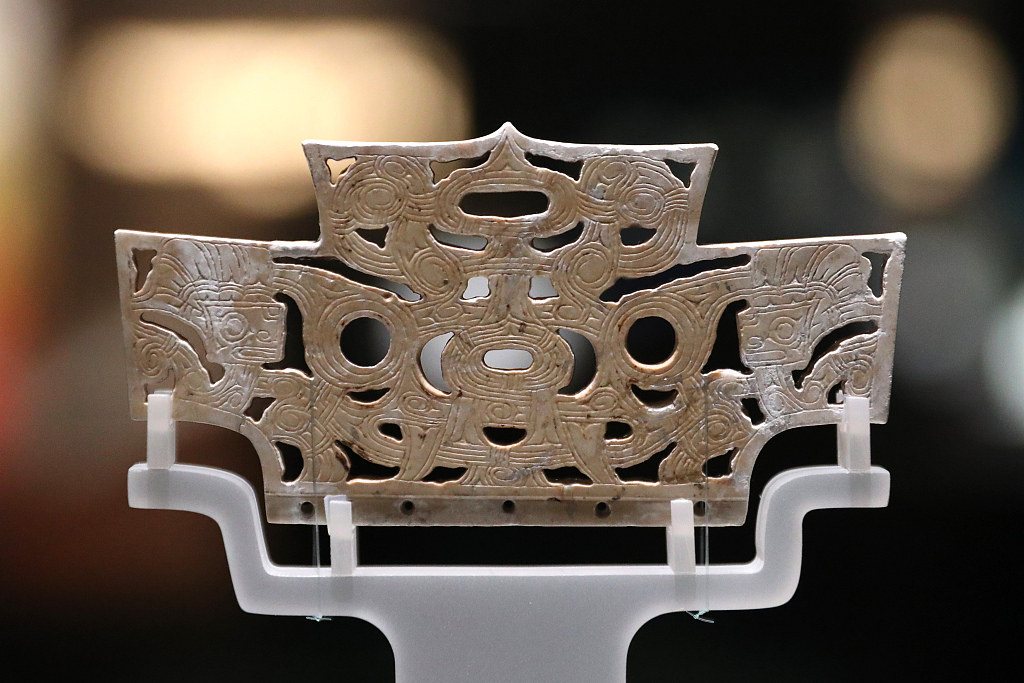
A photo taken on November 27, 2023 shows an aerial view of the archaeological ruins of Liangzhu city in Hangzhou, Zhejiang Province, China. /CFP
A photo taken on November 27, 2023 shows an aerial view of the archaeological ruins of Liangzhu city in Hangzhou, Zhejiang Province, China. /CFP
New archaeological discoveries at the ruins of Liangzhu ancient city and its wider water conservancy system were unveiled at a press conference held by the National Cultural Heritage Administration in Beijing on Wednesday.
Liangzhu culture, dating back to a period between 5,300 to 4,300 years ago, is one of the archaeological cultures of the Neolithic era in China. It was named after the discovery of the ancient city site in Liangzhu, Zhejiang Province in 1936. The most distinctive feature of the discoveries unearthed at the UNESCO-listed Liangzhu archaeological ruins was the number of jade artifacts found in various forms.
With the support of the "Archaeology China" project, the Zhejiang Provincial Institute of Cultural Relics and Archaeology has continued to conduct archaeological research into the core settlement of the Liangzhu ruins and its peripheral water conservancy system, leading to new breakthroughs in recent years.

A photo taken on June 19, 2023 shows an item of jade ware unearthed from the ruins of Liangzhu city on display at the Shanghai Museum, China. /CFP
A photo taken on June 19, 2023 shows an item of jade ware unearthed from the ruins of Liangzhu city on display at the Shanghai Museum, China. /CFP
More light has been shed on the early stages of Liangzhu culture through investigations and excavations into adjacent sites, and analysis has offered fresh insight into the nature of the settlement structures in these peripheral areas. This has helped to establish a new understanding of the distribution of Liangzhu site clusters during the pre-ancient city era.
Nearly 20 dams thought to have been constructed during the middle stages of Liangzhu culture were recently discovered in the area surrounding Liangzhu ancient city, seven of which are believed to date back to around 5,000 years ago. In addition, excavations around the site confirmed the existence of a complex high-sided dam structure, which possibly served the function of diverting water from the west to the east.
These discoveries indicate that the Liangzhu site cluster had undergone three separate phases of development, from scattered settlements, to the construction of a water conservancy system, and the eventual construction of Liangzhu ancient city.
These recent archaeological findings reflect the maturation of Liangzhu people's concept of settlement creation and urban construction, and their evolving belief systems as a while, which demonstrates the significant importance of Liangzhu culture in the origins of China's Neolithic civilizations.
Liangzhu archaeological ruins was declared a World Heritage site by UNESCO in 2019.



